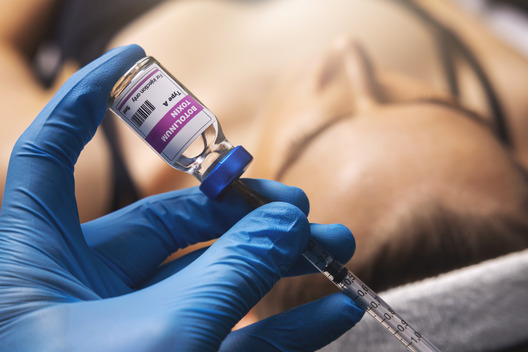
Do you ever wake up with a sore jaw or notice a clicking sound when you chew? These could be signs of Temporomandibular Joint Disorder (TMJ), a condition affecting millions of people across the U.S. While TMJ primarily impacts the jaw, it often leads to other symptoms, including chronic headaches. Fortunately, BOTOX is an effective solution. Continue reading to learn how it can significantly reduce TMJ-related headaches.
How Does TMJ Disorder Lead to Headaches?
The temporomandibular joint connects the jawbone to the skull, facilitating chewing and speaking. When these joints are strained (due to poor chewing habits, stress, or injury) they can become inflamed, leading to jaw stiffness and even lockjaw. As the jaw muscles tense, tension radiates to other nearby areas, often triggering pain around the ears, neck, and head.
These interconnected muscle groups mean that jaw tension from TMJ can contribute to frequent headaches. When the jaw muscles tighten, they can irritate nearby nerves and blood vessels, resulting in painful headaches that can disrupt daily life.
What Is BOTOX and How Can It Relieve TMJ Headaches?
While BOTOX is widely recognized for its cosmetic use in reducing wrinkles, it also serves as an effective treatment for TMJ symptoms. BOTOX works by temporarily relaxing muscles, which it achieves by blocking nerve signals. By applying this muscle-relaxing effect to the jaw, BOTOX can ease TMJ symptoms and reduce headache frequency and intensity.
When used for TMJ, BOTOX injections are placed around the jaw to relieve pressure on the temporomandibular joint. This relaxation of the jaw muscles reduces tension that causes headaches, allowing the jaw to rest in a more relaxed state. This treatment also helps with bruxism (teeth grinding), improves sleep quality, and protects teeth from excessive wear and tear.
What to Expect When Getting BOTOX for TMJ Headaches
Research shows that TMJ Disorder symptoms, including headaches, can improve by as much as 90% with BOTOX. If you’re considering this option, the first step is to consult with your dentist, who can evaluate your symptoms and discuss the benefits of BOTOX for TMJ.
The treatment process is simple and minimally invasive. After assessing your candidacy, your dentist will map out injection points on your face and jaw where BOTOX will have the most impact. The injections themselves are quick and virtually painless, administered with precision in just a few minutes. Results typically begin to emerge within a few days, with the most noticeable relief from jaw and headache pain appearing within the first week.
About the Author
Dr. Nada Elsadig earned her degree from Howard University College of Dentistry, where she was recognized as a top academic and clinical performer. Her practice offers a full range of services, including general, restorative, cosmetic, and emergency dentistry, along with specialized TMJ treatments. To schedule a BOTOX consultation, visit her website or call (703) 584-5883.
